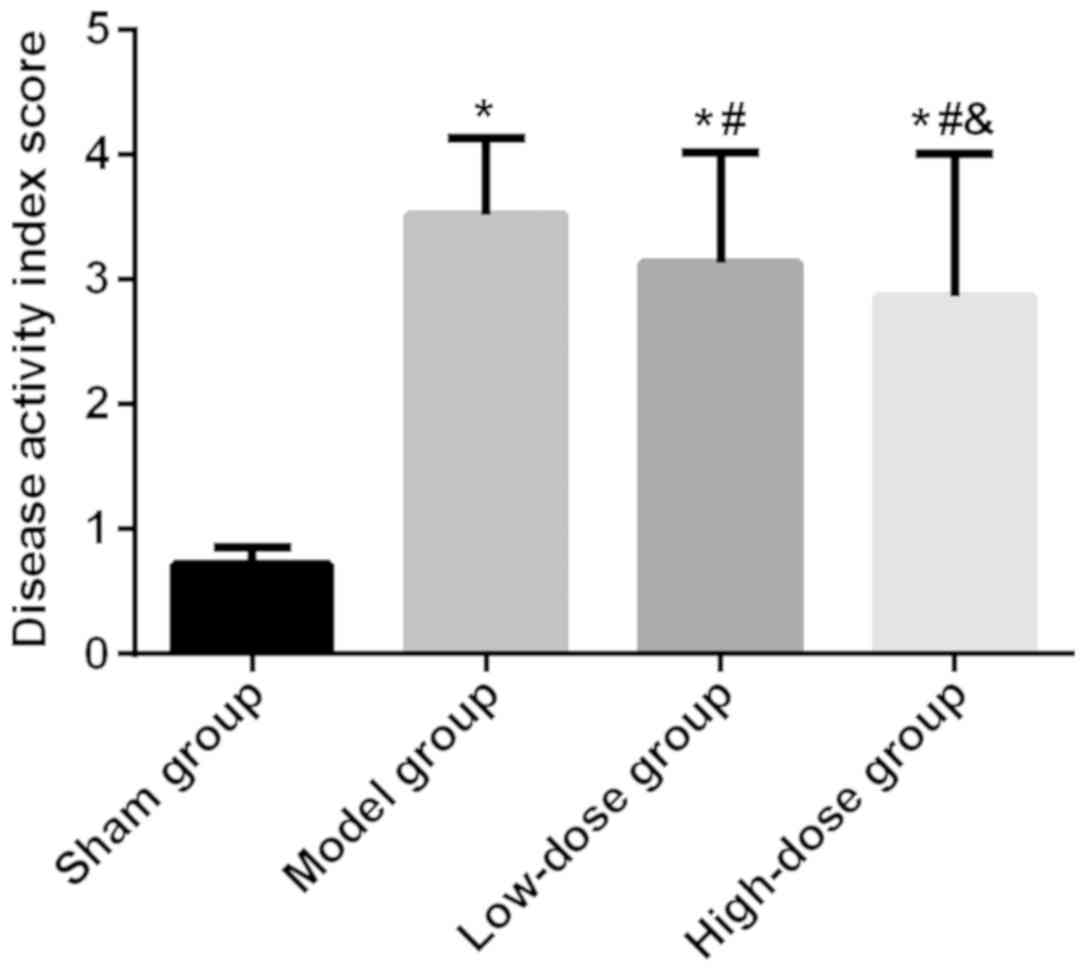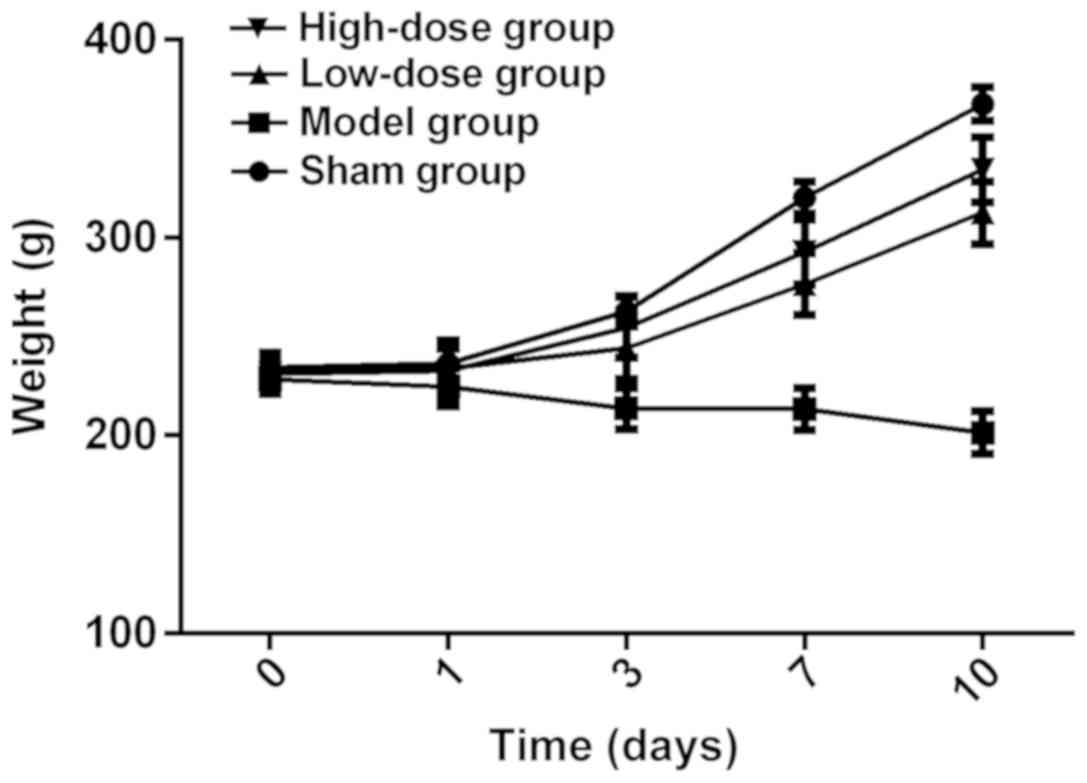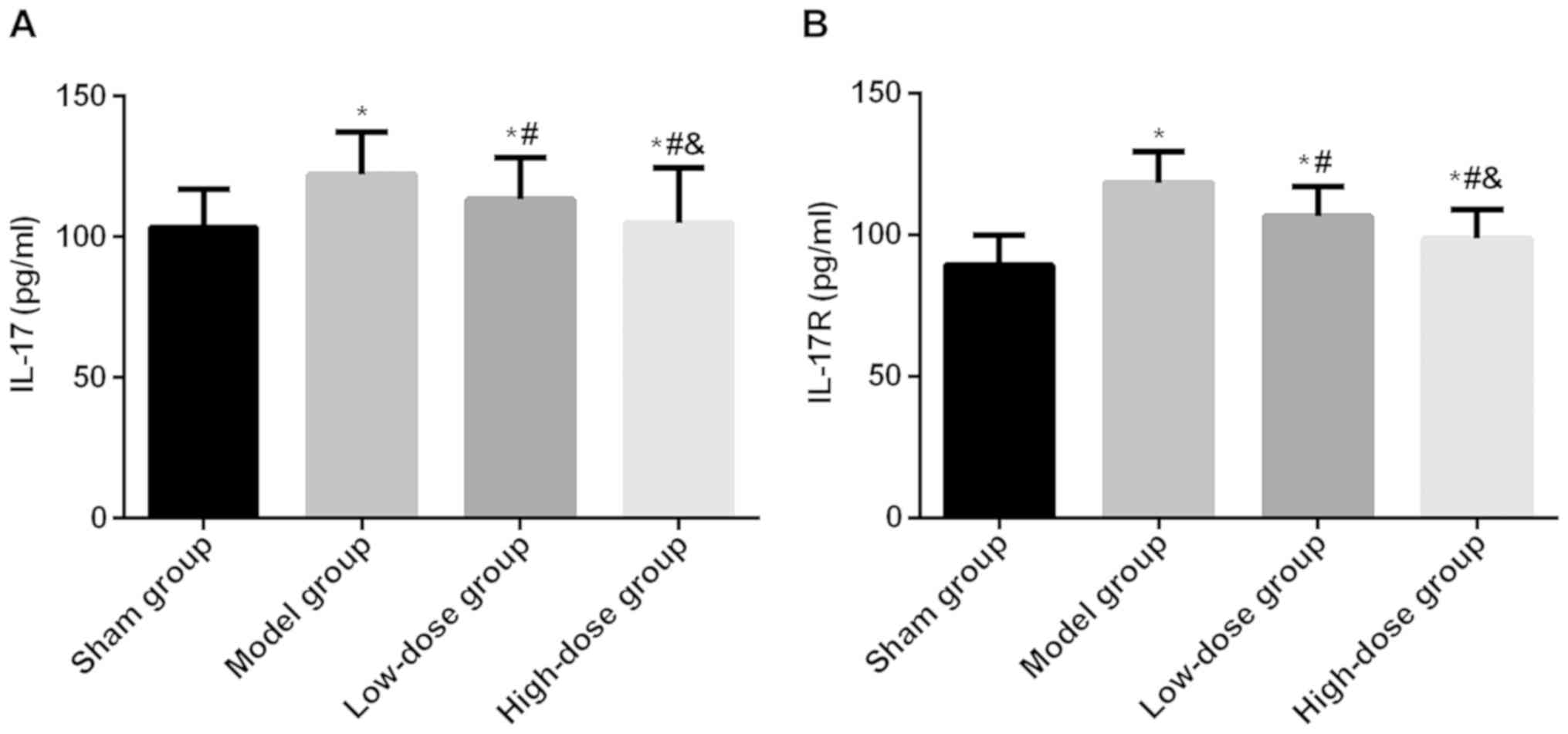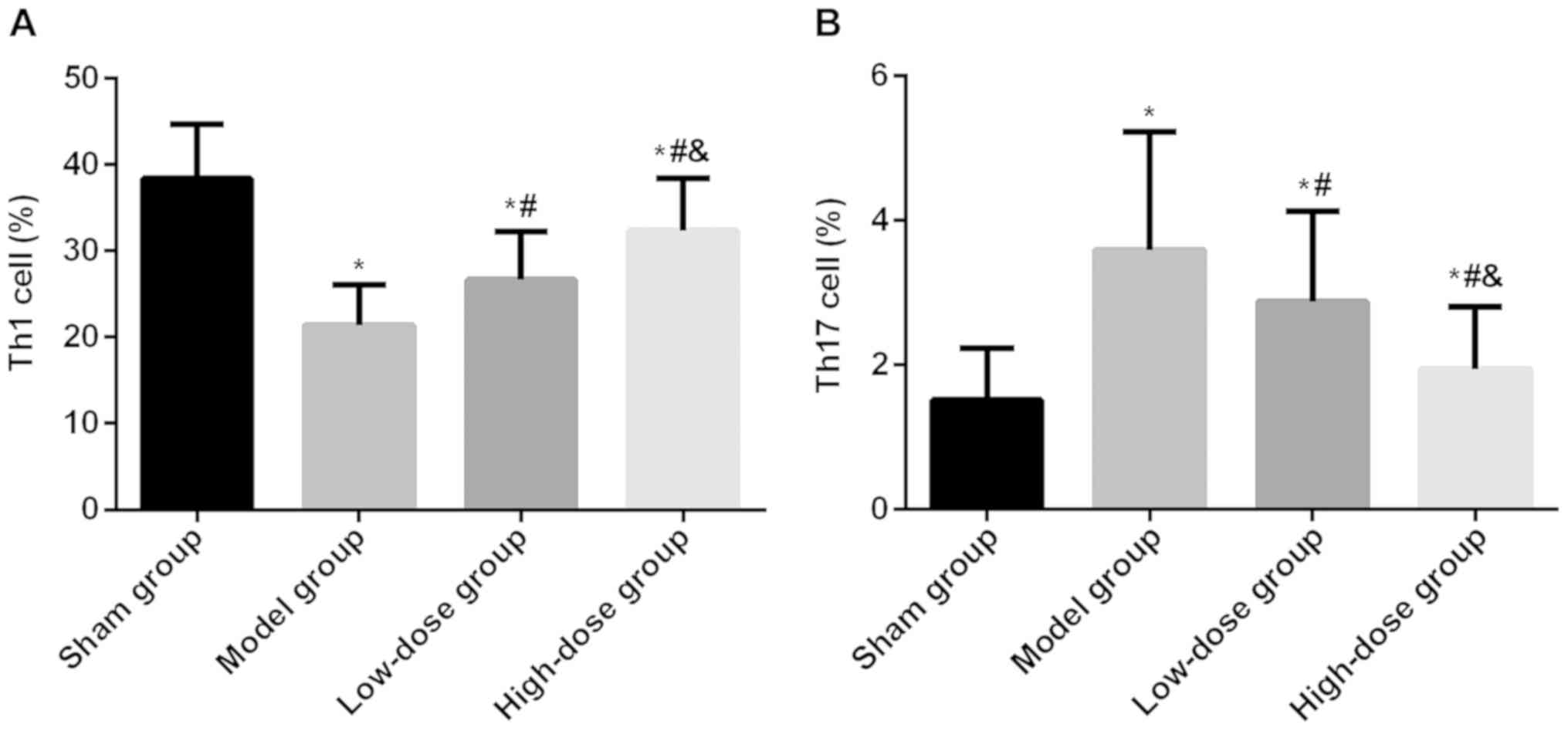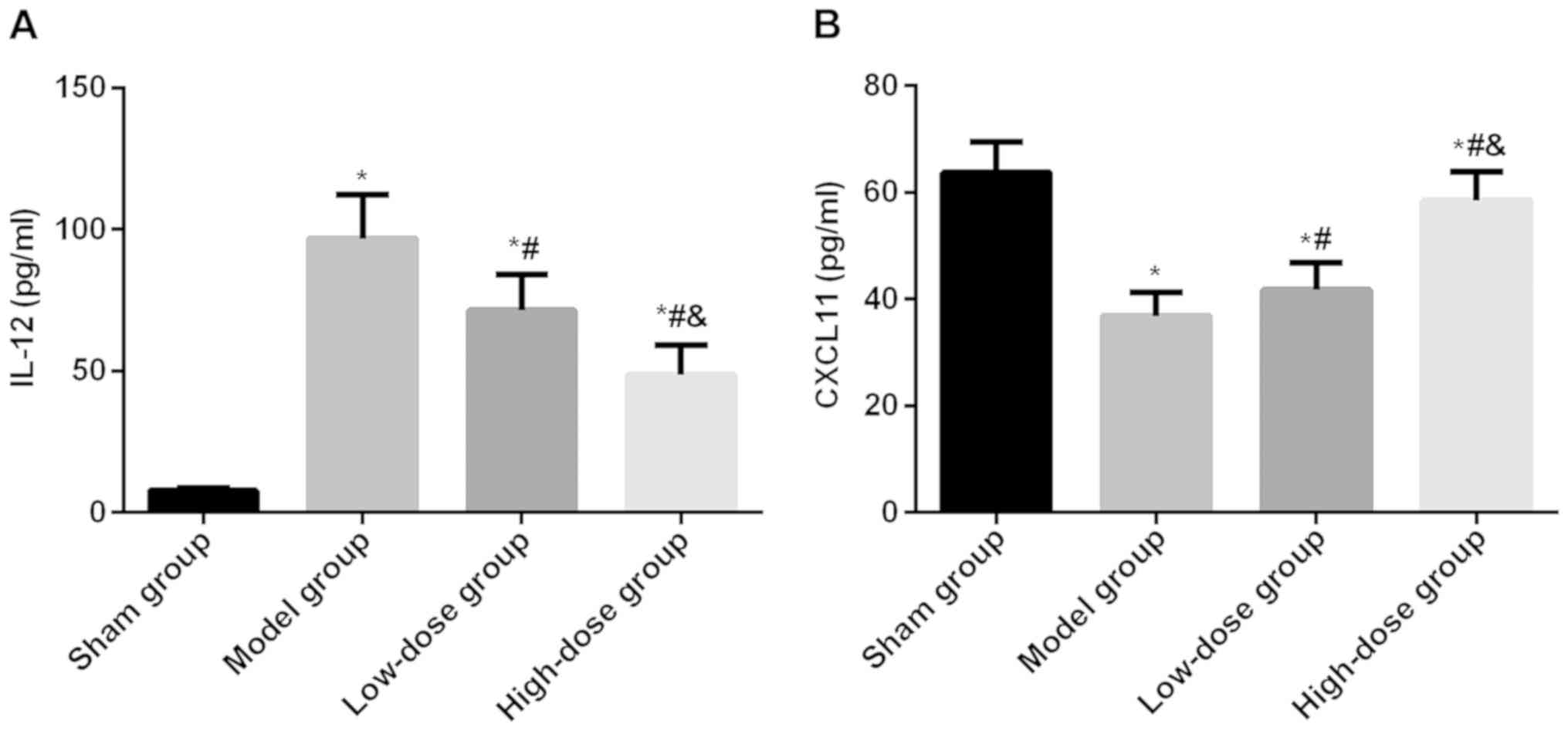|
1
|
Chuang LS, Villaverde N, Hui KY, Mortha A,
Rahman A, Levine AP, Haritunians T, Evelyn Ng SM, Zhang W, Hsu NY,
et al: A frameshift in CSF2RB predominant among Ashkenazi jews
increases risk for Crohn's disease and reduces monocyte signaling
via GM-CSF. Gastroenterology. 151:710–723.e2. 2016. View Article : Google Scholar : PubMed/NCBI
|
|
2
|
Ananthakrishnan AN, Huang H, Nguyen DD,
Sauk J, Yajnik V and Xavier RJ: Differential effect of genetic
burden on disease phenotypes in Crohn's disease and ulcerative
colitis: Analysis of a North American cohort. Am J Gastroenterol.
109:395–400. 2014. View Article : Google Scholar : PubMed/NCBI
|
|
3
|
Gevers D, Kugathasan S, Denson LA,
Vázquez-Baeza Y, Van Treuren W, Ren B, Schwager E, Knights D, Song
SJ, Yassour M, et al: The treatment-naive microbiome in new-onset
Crohn's disease. Cell Host Microbe. 15:382–392. 2014. View Article : Google Scholar : PubMed/NCBI
|
|
4
|
Cleynen I, Boucher G, Jostins L, Schumm
LP, Zeissig S, Ahmad T, Andersen V, Andrews JM, Annese V, Brand S,
et al: International inflammatory bowel disease genetics
consortium: Inherited determinants of Crohn's disease and
ulcerative colitis phenotypes: A genetic association study. Lancet.
387:156–167. 2016. View Article : Google Scholar : PubMed/NCBI
|
|
5
|
Feagan BG, Sandborn WJ, Gasink C,
Jacobstein D, Lang Y, Friedman JR, Blank MA, Johanns J, Gao LL,
Miao Y, et al: UNITI–IM-UNITI Study Group: Ustekinumab as induction
and maintenance therapy for Crohn's disease. N Engl J Med.
375:1946–1960. 2016. View Article : Google Scholar : PubMed/NCBI
|
|
6
|
De Cruz P, Kamm MA, Hamilton AL, Ritchie
KJ, Krejany EO, Gorelik A, Liew D, Prideaux L, Lawrance IC, Andrews
JM, et al: Crohn's disease management after intestinal resection: A
randomised trial. Lancet. 385:1406–1417. 2015. View Article : Google Scholar : PubMed/NCBI
|
|
7
|
Del Pinto R, Pietropaoli D, Chandar AK,
Ferri C and Cominelli F: Association between inflammatory bowel
disease and vitamin D deficiency: A systematic review and
meta-analysis. Inflamm Bowel Dis. 21:2708–2717. 2015. View Article : Google Scholar : PubMed/NCBI
|
|
8
|
Suibhne TN, Cox G, Healy M, O'Morain C and
O'Sullivan M: Vitamin D deficiency in Crohn's disease: Prevalence,
risk factors and supplement use in an outpatient setting. J Crohn's
Colitis. 6:182–188. 2012. View Article : Google Scholar
|
|
9
|
Raftery T, Martineau AR, Greiller CL,
Ghosh S, McNamara D, Bennett K, Meddings J and O'Sullivan M:
Effects of vitamin D supplementation on intestinal permeability,
cathelicidin and disease markers in Crohn's disease: Results from a
randomised double-blind placebo-controlled study. United European
Gastroenterol J. 3:294–302. 2015. View Article : Google Scholar : PubMed/NCBI
|
|
10
|
Narula N, Cooray M, Anglin R, Muqtadir Z,
Narula A and Marshall JK: Impact of high-dose vitamin D3
supplementation in patients with Crohn's disease in remission: A
pilot randomized double-blind controlled study. Dig Dis Sci.
62:448–455. 2017. View Article : Google Scholar : PubMed/NCBI
|
|
11
|
Monin L, Gudjonsson JE, Childs EE, Amatya
N, Xing X, Verma AH, Coleman BM, Garg AV, Killeen M, Mathers A, et
al: MCPIP1/regnase-1 restricts IL-17A- and IL-17C-dependent skin
inflammation. J Immunol. 198:767–775. 2017. View Article : Google Scholar : PubMed/NCBI
|
|
12
|
Chen K, Eddens T, Trevejo-Nunez G, Way EE,
Elsegeiny W, Ricks DM, Garg AV, Erb CJ, Bo M, Wang T, et al: IL-17
receptor signaling in the lung epithelium is required for mucosal
chemokine gradients and pulmonary host defense against K.
pneumoniae. Cell Host Microbe. 20:596–605. 2016. View Article : Google Scholar : PubMed/NCBI
|
|
13
|
Monteleone G, Neurath MF, Ardizzone S, Di
Sabatino A, Fantini MC, Castiglione F, Scribano ML, Armuzzi A,
Caprioli F, Sturniolo GC, et al: Mongersen, an oral SMAD7 antisense
oligonucleotide, and Crohn's disease. N Engl J Med. 372:1104–1113.
2015. View Article : Google Scholar : PubMed/NCBI
|
|
14
|
Dyring-Andersen B, Bonefeld CM, Bzorek M,
Løvendorf MB, Lauritsen JP, Skov L and Geisler C: The Vitamin D
analogue calcipotriol reduces the frequency of CD8+
IL-17+ T cells in psoriasis lesions. Scand J Immunol.
82:84–91. 2015. View Article : Google Scholar : PubMed/NCBI
|
|
15
|
Cantorna MT, Snyder L, Lin YD and Yang L:
Vitamin D and 1,25(OH)2D regulation of T cells. Nutrients.
7:3011–3021. 2015. View Article : Google Scholar : PubMed/NCBI
|
|
16
|
Gomollón F, Dignass A, Annese V, Tilg H,
Van Assche G, Lindsay JO, Peyrin-Biroulet L, Cullen GJ, Daperno M,
Kucharzik T, et al: ECCO: 3rd European evidence-based consensus on
the diagnosis and management of Crohn's disease 2016: Part 1:
Diagnosis and medical management. J Crohn's Colitis. 11:3–25. 2017.
View Article : Google Scholar
|
|
17
|
Gharib H, Papini E, Garber JR, Duick DS,
Harrell RM, Hegedüs L, Paschke R, Valcavi R and Vitti P;
AACE/ACE/AME Task Force on Thyroid Nodules, : American Association
of Clinical Endocrinologists, American College of Endocrinology,
and Associazione Medici Endocrinologi Medical Guidelines for
Clinical Practice for the Diagnosis and Management of Thyroid
Nodules - 2016 Update. Endocr Pract. 22:622–639. 2016. View Article : Google Scholar : PubMed/NCBI
|
|
18
|
Sadeghian M, Saneei P, Siassi F and
Esmaillzadeh A: Vitamin D status in relation to Crohn's disease:
Meta-analysis of observational studies. Nutrition. 32:505–514.
2016. View Article : Google Scholar : PubMed/NCBI
|
|
19
|
Maxwell JR, Zhang Y, Brown WA, Smith CL,
Byrne FR, Fiorino M, Stevens E, Bigler J, Davis JA, Rottman JB, et
al: Differential roles for interleukin-23 and interleukin-17 in
intestinal immunoregulation. Immunity. 43:739–750. 2015. View Article : Google Scholar : PubMed/NCBI
|
|
20
|
Kim J, Bissonnette R, Lee J, Correa da
Rosa J, Suárez-Fariñas M, Lowes MA and Krueger JG: The spectrum of
mild to severe psoriasis vulgaris is defined by a common activation
of IL-17 pathway genes, but with key differences in immune
regulatory genes. J Invest Dermatol. 136:2173–2182. 2016.
View Article : Google Scholar : PubMed/NCBI
|
|
21
|
Marchant A, Amedei A, Azzurri A, Vekemans
J, Benagiano M, Tamburini C, Lienhardt C, Corrah T, McAdam KP,
Romagnani S, et al: Polarization of PPD-specific T-cell response of
patients with tuberculosis from Th0 to Th1 profile after successful
antimycobacterial therapy or in vitro conditioning with
interferon-alpha or interleukin-12. Am J Respir Cell Mol Biol.
24:187–194. 2001. View Article : Google Scholar : PubMed/NCBI
|
|
22
|
Liu Z, Wang M, Zhou S, Ma J, Shi Y, Peng
J, Hou M and Guo C: Pulsed high-dose dexamethasone modulates
Th1-/Th2-chemokine imbalance in immune thrombocytopenia. J Transl
Med. 14:3012016. View Article : Google Scholar : PubMed/NCBI
|
|
23
|
Brand S: Crohn's disease: Th1, Th17 or
both? The change of a paradigm: new immunological and genetic
insights implicate Th17 cells in the pathogenesis of Crohn's
disease. Gut. 58:1152–1167. 2009. View Article : Google Scholar : PubMed/NCBI
|















